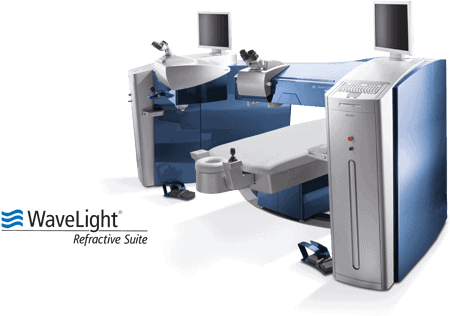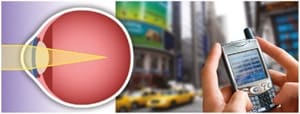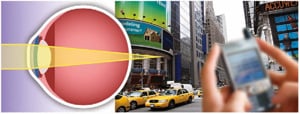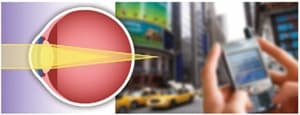Lasik Eye Surgery & Other Refractive Surgery
Dr Phil McGeorge is a pioneer in Perth of the LASIK eye surgery technique. Having performed this procedure since introducing the technology into Western Australia in 1992, Dr Phil has successfully helped 1000s of West Australians with their ophthalmic disorders.

LASIK Laser Treatment
LASIK eye surgery is a well known surgical procedure that uses a laser to correct a number of vision problems, including for people affected by nearsightedness, farsightedness, and astigmatism.
For many people who wear glasses or contacts, laser eye surgery called LASIK (Laser In Situ Keratomileusis) may be of help. LASIK may be used if you are over 20 years of age, have a stable spectacle prescription for at least 1-2 years and if your cornea is thick enough (which is easily assessed prior to surgery).
A specialized Excimer laser can reshape the corneal surface in suitable patients with myopia, hyperopia and astigmatism, to allow light to focus on or near the retinal surface. This improves distance vision. The procedure takes around 15 – 20minutes for each eye and is performed in the rooms under local anaesthetic eye drops. For many patients, the visual improvements are experienced immediately.
Light from an object is focused by the cornea at the front of the eye and the lens inside of the eye to a sharp point of focus on the back of the eye (retina). A refractive error is when the light is not accurately focused on the retina.
There are four main types of refractive errors which produce a blurred image, resulting in the need to wear eye glasses or contact lenses.

Can You See Things Well Only When They Are Close?
Myopia, or nearsightedness, is one type of vision condition that can cause blurred eyesight. With this condition you are able to clearly see objects up close, but not at a distance. Myopia occurs when the light rays entering the eye bend too much, coming to a point of focus before they reach the retina. With nearsightedness, your eyes may be longer than normal or the cornea may be too steep. As a result, the images you see don’t focus on the retina as they should.

Is It Easier to See Clearly When Objects Are Far Away?
Hyperopia, or farsightedness, is a vision condition in which you can see distant objects clearly, but not those up close. Hyperopia occurs when the eye is shorter than normal or the cornea is too fl at. This condition prevents the light rays entering your eye from bending enough to reach a point of focus on the retina. Instead, the images you see focus behind the retina.

For someone without astigmatism, the eye is shaped like a basketball. However, for someone with astigmatism, sometimes the surface of the eye is curved more like a rugby ball, with both fl atter and steeper curves. When the surface of the eye has an uneven curvature, vision becomes distorted. This common irregularity, called corneal astigmatism, causes blurred or distorted vision because light rays are not focused at one spot to provide clear vision.
Light from near objects is focused behind the retina due to the natural aging process of the lens. This usually becomes noticeable from around 40 years of age. People who had previously normal vision find it increasingly harder to focus on near objects.
For more information or to schedule an appointment for our Murdoch or Subiaco consulting rooms where we can discuss your suitability, call Murdoch Eye Centre on (08) 9218 7666.
For more information on our Laser and refractive treatments, please visit murdocheye.com.au for more information.

